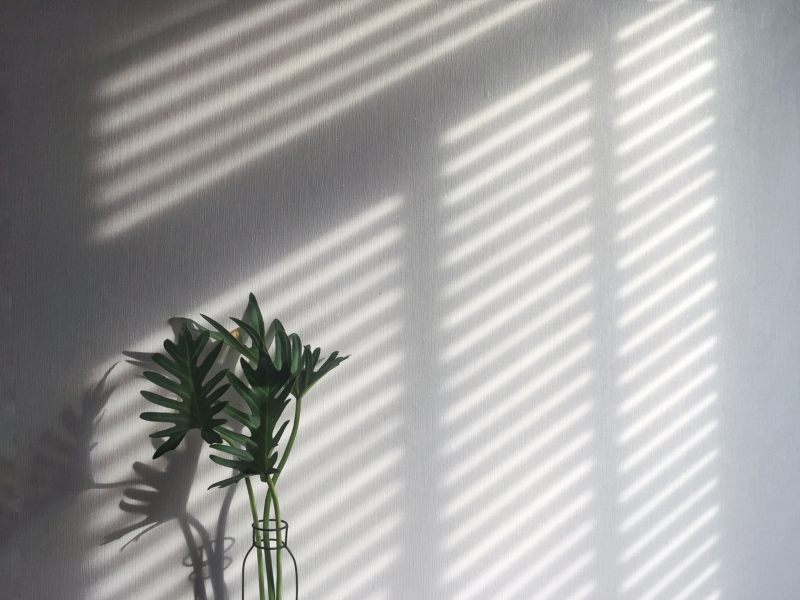Good question. When was the last time you had to choose drapes, blinds, sheers or shutters? Maybe it was when you moved into a new home. How about when you replaced your old single-pane windows for those beautiful double-paned picture windows? Or maybe it was after a full room redesign or addition.
Even if you live on a secluded hillside, with no neighbors nearby, covering your windows could be a wise choice.
Let’s explore the reasons why.
While many new windows have coating to protect interiors from UV rays, they can always use a little more help from window coverings. Covering your windows can boost the protection and prevent direct sunlight from fading or damaging fabrics, wood surfaces and artwork, extending the beauty and lifespan of these items.
Window coverings also provide privacy, preventing outsiders from seeing into your interior spaces. In a secluded spot or along a busy thoroughfare, window coverings allow you to control the level of visibility and maintain a sense of security and seclusion within your home.
These are important considerations, as far as they go.
You could ask yourself questions like these before making any big decisions.
- What direction do your windows face? If they face west, that means more direct sun.
- What is your view, and do you want to protect it?
Other considerations might be the color of your walls, the placement of the windows in the room and whether you want an airy, light look, something cutting edge and modern or to bring in the drama of fabric.
Window blinds are a popular choice and come in a variety of materials. According to a couple of sources, they were invented in the 1700s in the Middle East and then patented as Venetian blinds in 1769 by an Englishman named Edward Bevan. They’ve come a long way since then, yet the original concept remains the same. They are available in different slat sizes and can be adjusted to control the amount of light and privacy in a room. You can find them in aluminum, vinyl, wood and faux wood designs and colors.
Another factor you won’t want to overlook is how window coverings can help you control the temperature inside your home. The recent heat advisories for the San Francisco Bay Area, and the colder-than-usual winter we had last year could make this a key factor in what you decide to use as window coverings. Insulating curtains can lead to energy savings by reducing the reliance on heating and cooling systems. They can also make a beautiful statement at the same time.
Window covering can enhance the style and design of a room, complementing the chosen color scheme, textures and patterns. From simple blinds to luxurious curtains, window coverings add visual interest and can be used as a design element to create a cohesive and inviting atmosphere.
Most homes have curtains or drapes that hang from the top of the window frame and along the side of the frame.
According to local interior designer Stacey Lapuk, “If we mount the rod higher and wider than the window, it makes the window appear larger. This can really expand the feel of the entire room.”
Do you want the light in your room to be bright or filtered?
In a bedroom, you might prefer heavier curtains to block the light. In a kitchen or dining room, you might prefer a great deal of natural light.
The right window coverings allow you to adjust them to filter or block sunlight, to reduce glare creating a comfortable and functional environment to suit your needs.
Lastly, you may want to consider the acoustic control value of heavy drapes or blinds with fabric inserts, that can help absorb sound and improve acoustics inside a room. With many of us choosing to work from home, at least a day or two a week, having a quiet space certainly has its advantages. It might even keep the sound of your dog barking or the music in your teen’s room from interrupting that Zoom meeting.
Before you buy those new window coverings ensure that both the functional and aesthetic aspects of your rooms are considered and addressed.


